America’s Failing Drinking Water System
First, Flint, Michigan; then, Jackson, Mississippi. Communities around the country wonder if their water quality problems will lead to the next national crisis.
The drinking water system in the United States is broken in all kinds of ways.
Chronic underinvestment has left water infrastructure outdated and on the verge of collapse in many places across the country. For example, historic flooding last summer damaged operations at a water treatment plant in Jackson, Mississippi, leaving more than 150,000 people without safe drinking water for weeks. The event drew national attention to Jackson, a Black-majority city, and shed light on the water issues that residents there have been shouldering for decades (and continue to do so). Meanwhile, lead, per- and polyfluoroalkyl substances known as PFAS, industrial pollution, and agricultural runoff are contaminating the drinking water for hundreds of millions of people—and many don’t even know it.
“Here in America, we naively think that we have these environmental government agencies looking out for our water quality. And that if something were wrong with the drinking water flowing into our homes or onto our properties, we would be notified,” says Jackie Medcalf, executive director of the Texas Health and Environment Alliance (THEA). “But that’s not exactly the case.”
Below are four places that are grappling with different drinking water pollution problems.
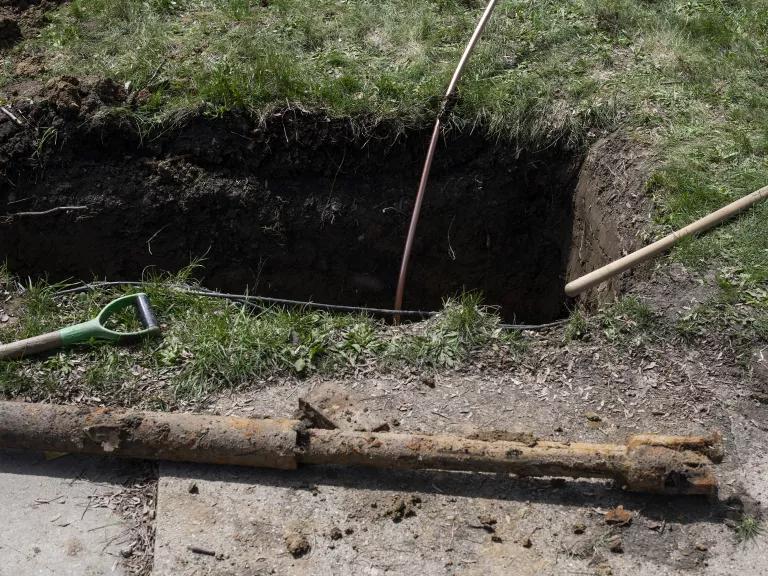
Copper lines are often used to replace galvanized lead service lines, as shown here in Flint, Michigan.
Brittany Greeson for NRDC
Buffalo, New York: Lead pipes
In Buffalo, New York, 64 percent of houses are more than 80 years old, giving the city the distinction of having the oldest urban housing stock in the United States. Unfortunately, the pipes that bring water to those homes are often just as old, exposing many residents to lead, a neurotoxin. Nearly 6 percent of Buffalo’s children have elevated lead levels in their blood, which is triple the exposure rate of Flint, Michigan, a decade ago.
Telling already struggling families that lead is likely contaminating their drinking water is incredibly difficult, says Stephanie Simeon, executive director of Heart of the City Neighborhoods (HOCN), a local nonprofit that works to support community development. And not being able to provide a solution, she explains, feels like a disservice. “I can't tell people ‘don't drink the water,’ because it incites fear in an already traumatized community. And I don't have another resource for them.”
But with an estimated 40,000 water service lines in Buffalo containing lead—more than half of the city’s total—addressing the problem can’t wait. Last summer, HOCN and other community groups partnered with NRDC and the national nonprofit WE ACT for Environmental Justice to pinpoint where Buffalo’s lead pipes are. Now, with support from water analytics company BlueConduit, the city plans to use that data to create an online interactive map.
“It can't just be the activists. It can't just be the Black activists. It can't just be the moms,” Simeon says. “Education system: Back me up. Pediatricians, therapists, social workers: Back me up. Labor unions: Back me up.”
Stephanie Simeon, executive director of Heart of the City Neighborhoods
City officials say that replacing all of the lead pipes could take decades—and up to $500 million. To date, the city has removed fewer than 2,000.
“We are not giving up,” Simeon says. Until those pipes are gone, she’ll be fighting to get free water filters into homes as a temporary solution. She’s also calling on others to sound the alarm.
What Can Be Done: Strengthen the Lead and Copper Rule
The U.S. Environmental Protection Agency (EPA) recently estimated that there are 9.2 million lead service lines across all 50 states; an earlier NRDC survey put that number between 9.7 million and 12.8 million. In fact, between 2018 and 2020, at least 186 million people, more than half of the country’s population, drank from water systems that detected lead levels exceeding 1 part per billion, the level recommended by the American Academy of Pediatrics to protect schoolchildren.
The Lead and Copper Rule is supposed to address the nation’s lead drinking water problem. Even though the Trump administration weakened the rule, the EPA announced in 2021 that it will no longer defend that version of the regulation in court. The agency also plans to update the Lead and Copper Rule by October 2024. A stronger rule would be crucial to replacing all of the country’s lead pipes within the decade.
Houston: PFAS pollution
Activist Medcalf describes the bodies of her fellow Houston residents as “toxic soup.” She knows from experience. After developing seizures and losing the use of her hands in college, Medcalf discovered she had elevated levels of 19 heavy metals in her blood. Medcalf has since dedicated herself to spreading the word about the pollution problems of her hometown, the country’s fourth-largest city. Houston is home to nearly two dozen Superfund sites—areas so contaminated that the EPA has prioritized them for cleanup—and according to Medcalf’s THEA, there are another 2,000 former and potentially polluted industrial sites in the metro area.
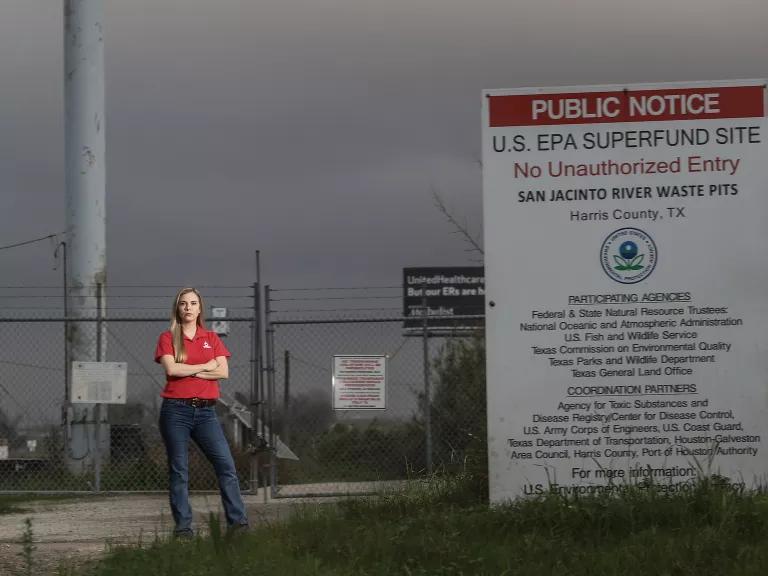
Jackie Medcalf founded the Texas Health and Environment Alliance in 2015.
Thomas Shea/Houstonia
Making matters worse, Houston recently discovered it also has a widespread PFAS problem. Scientists have linked exposure to these synthetic “forever chemicals”—so named for their inability to break down—with cancer, developmental issues, and immune system problems. A recent peer-reviewed study, conducted by NRDC scientists in collaboration with community groups like THEA, found very high levels of PFAS at multiple sites across Houston.
Medcalf explains that many of the chemicals they discovered are unmonitored short-chain PFAS, inaccurately touted by manufacturers as safer than longer chain varieties since they don’t stay as long in a person’s body. They still pose a high risk in Houston, where various other pollution sources are already wreaking havoc on residents’ health.
“We're talking about communities who are exposed to low-level contaminants on a regular basis, so the body burden is already high,” Medcalf says. “Over time, the body is not going to excrete the short-chain PFAS as quickly as someone with a lower body burden.”
After Hurricane Harvey flooded the city in 2017, for instance, THEA found PCBs in the water of one property owner. That same property owner recently discovered they also have a PFAS contamination problem. “It’s very unsettling,” says Medcalf, adding that the residents who are aware of the exposures are left feeling scared and defeated.
What Can Be Done: Manage PFAS as a single class of chemicals
In March, the EPA proposed, for the first time ever, to regulate PFAS in tap water. While this is good news, the agency plans to do so for only six of the roughly 14,000 types of PFAS that exist.
The agency estimates that up to 6,300 of the country’s drinking water systems, serving up to 94 million people, contain levels of PFAS that would violate the standards it just proposed. Still, since the EPA requires water systems to monitor for only 29 kinds of PFAS, NRDC researchers suggest more expansive testing would show even more widespread contamination. Meanwhile, manufacturers continue to churn out the chemicals without regulation or a requirement to fix the damage they’ve already set into motion.
Pervasive PFAS contamination is a national water crisis that NRDC senior strategic director for health Erik D. Olson describes as a “five-alarm fire.” Regulating PFAS altogether as a single class of chemicals with similar properties would better protect people because it would make monitoring, testing, cleaning up, and ultimately discontinuing the production of these dangerous chemicals easier.
Puerto Rico: Toxic waste
Poor drinking water quality has plagued Puerto Rico for years. In 2015, more than 3.4 million Puerto Ricans, 99.5 percent of the island’s population, drank from water supply systems with violations under the Safe Drinking Water Act (SDWA). Two years later, Hurricane Maria wiped out infrastructure, exacerbating Puerto Rico’s drinking water problems. The situation remains dire. According to EPA records, the public water system for Metro San Juan, for example, leads the country in SDWA violations. The system, which serves more than 1.1 million people, is the largest public water system on the agency’s list of “serious violators.”
The reasons behind the island’s water problems are varied, explains Osvaldo Rosario, an environmental chemist and longtime professor and researcher at the University of Puerto Rico. They include a history of widespread industrial pollution, sewage contamination due to underdeveloped water treatment infrastructure, poor land management, and a lack of enforcement of the SDWA and other environmental laws.
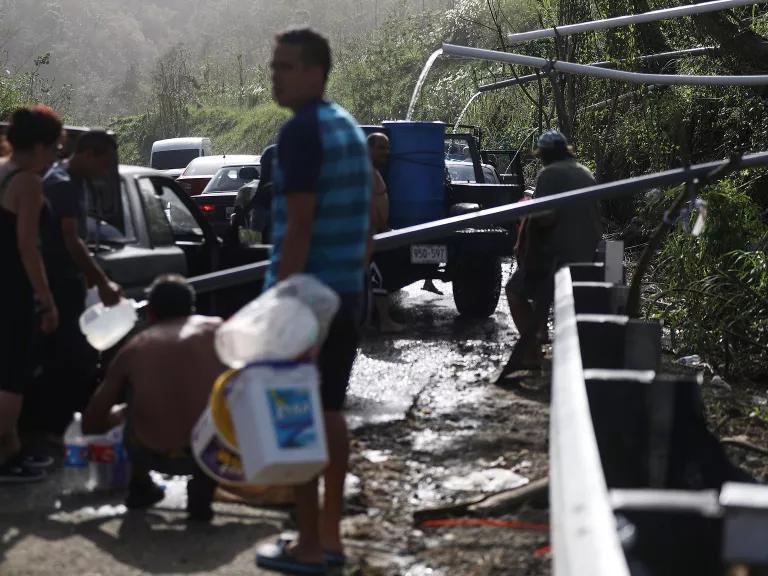
Nearly a month after the destruction caused by Hurricane Maria in 2017, people in Utuado, Puerto Rico, fill containers with water funneled through pipes from a mountain stream.
Mario Tama/Getty Images
For instance, the EPA directly attributes 15 Superfund sites on the island to the pharmaceutical industry, which is one of Puerto Rico’s largest; it is also one of its biggest polluters of groundwater. The coal industry is another. Decades of coal ash pollution have exposed tens of thousands of Puerto Ricans to unsafe drinking water.
There is a silver lining, Rosario notes. “As people become more intolerant of the loss of quality of life, and the loss of quality of water, you begin hearing them raise their voices more and more.”
What Can Be Done: Update the Safe Drinking Water Act
In April, the Biden administration announced $62 million for upgrades to the island’s drinking water infrastructure, but more robust enforcement of the SWDA would go even further. The 1974 federal law sets limits for drinking water contaminants and requires water utilities to test their supplies and report the results. Congress overhauled the law nearly 30 years ago, which weakened the EPA’s ability to set new standards. New legislation could strengthen the SDWA by helping the EPA to adopt stronger water quality standards and protections for water sources, as well as to better hold utilities accountable for failing to meet health, testing, and reporting standards.
Central Valley, California: Agriculture contamination
“People should be able to turn on their tap and drink the water that comes out. It’s that simple,” says Kelsey Hinton, who is the communications director for Community Water Center (CWC), a nonprofit with offices in California’s Central Valley and Central Coast. Yet, 11 years after California declared that access to safe, clean, and affordable water is a human right, about a million Californians still don’t have safe drinking water. And the problem disproportionately impacts small, rural communities of color, particularly Latine farmworker communities. In these areas, groundwater is often contaminated with agricultural runoff, which includes high levels of pesticides as well as nitrates due to fertilizer use or waste from large-scale livestock operations. Exposure to nitrates, which are colorless and odorless, has been linked to thyroid disease and cancer and has been known to cause pregnancy complications, birth defects, and “blue baby syndrome,” which can seriously threaten the health of infants.
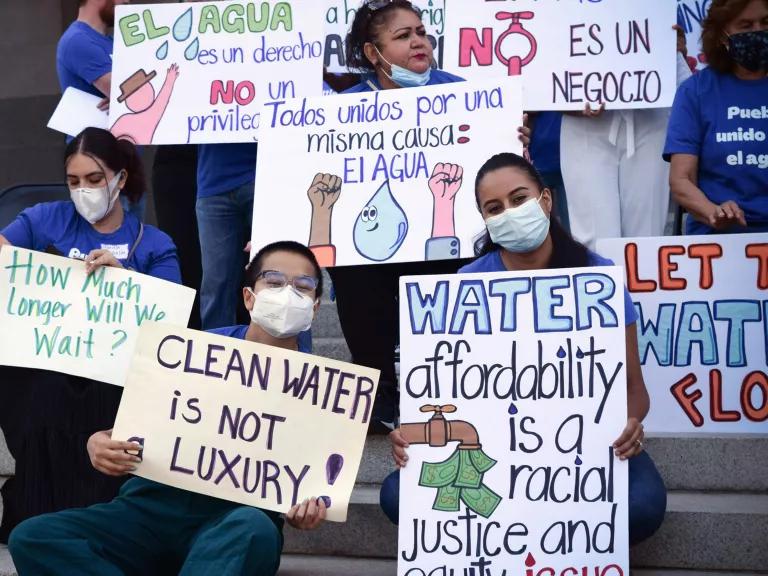
Community members from California’s Central Valley, Central Coast, and East Coachella Valley protest at the capitol in Sacramento in support of safe, affordable water for all.
Courtesy of Community Water Center
“So you might be looking at a clean glass of water, and smelling it, and thinking that you're fine, but you could be really harming yourself without even knowing,” Hinton says. That’s where CWC comes in. The advocates help community members who have private wells access water testing while also helping residents on public supplies find information on their water quality—and in their own languages.
California’s climate whiplash between drought and flooding has made an already difficult situation worse. Very dry years have left communities with little to no drinking water, and less water can further concentrate the contaminants that are already present. Meanwhile, flooding can wash waste from ranches and dairy farms into water supplies, leading to bacterial contamination.
What Can Be Done: Invest in infrastructure and regenerative agriculture
CWC works at the local and state levels to address poor water quality, but Hinton stresses that a lasting solution requires a national effort. “All of these communities that are working so hard can only do so much with the resources made available,” she says.
While $30 billion, through the 2021 Bipartisan Infrastructure Law, helped jump-start improvements to water treatment and distribution systems, water advocates suggest the United States would need to invest $109 billion per year over the next 20 years to truly fix the country’s crumbling drinking water infrastructure. And water infrastructure funding programs need to prioritize disadvantaged communities and ensure that the funds actually reach them.
Further, policies that advance regenerative agriculture, such as through a revised Farm Bill, can aid the transition away from industrial agriculture to more sustainable practices while reducing pollution in local communities. In addition, a federal low-income water rate assistance program could help ease financial burdens for individuals. Rates continue to rise as water systems continue to age, causing many people across the country—disproportionately in communities of color—to go into debt paying for what is often unsafe water.
This NRDC.org story is available for online republication by news media outlets or nonprofits under these conditions: The writer(s) must be credited with a byline; you must note prominently that the story was originally published by NRDC.org and link to the original; the story cannot be edited (beyond simple things such as grammar); you can’t resell the story in any form or grant republishing rights to other outlets; you can’t republish our material wholesale or automatically—you need to select stories individually; you can’t republish the photos or graphics on our site without specific permission; you should drop us a note to let us know when you’ve used one of our stories.
Millions of Americans drink tap water served by toxic lead pipes.
Tell the EPA we need safe drinking water!
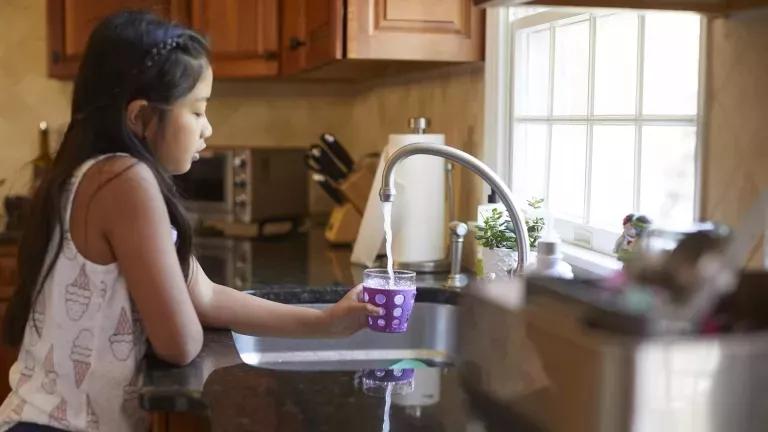
Tell the EPA we need safe drinking water!
There is no safe level of lead exposure. But millions of old lead pipes contaminate drinking water in homes in every state across the country. We need the EPA to do its part to replace lead pipes equitably and quickly.

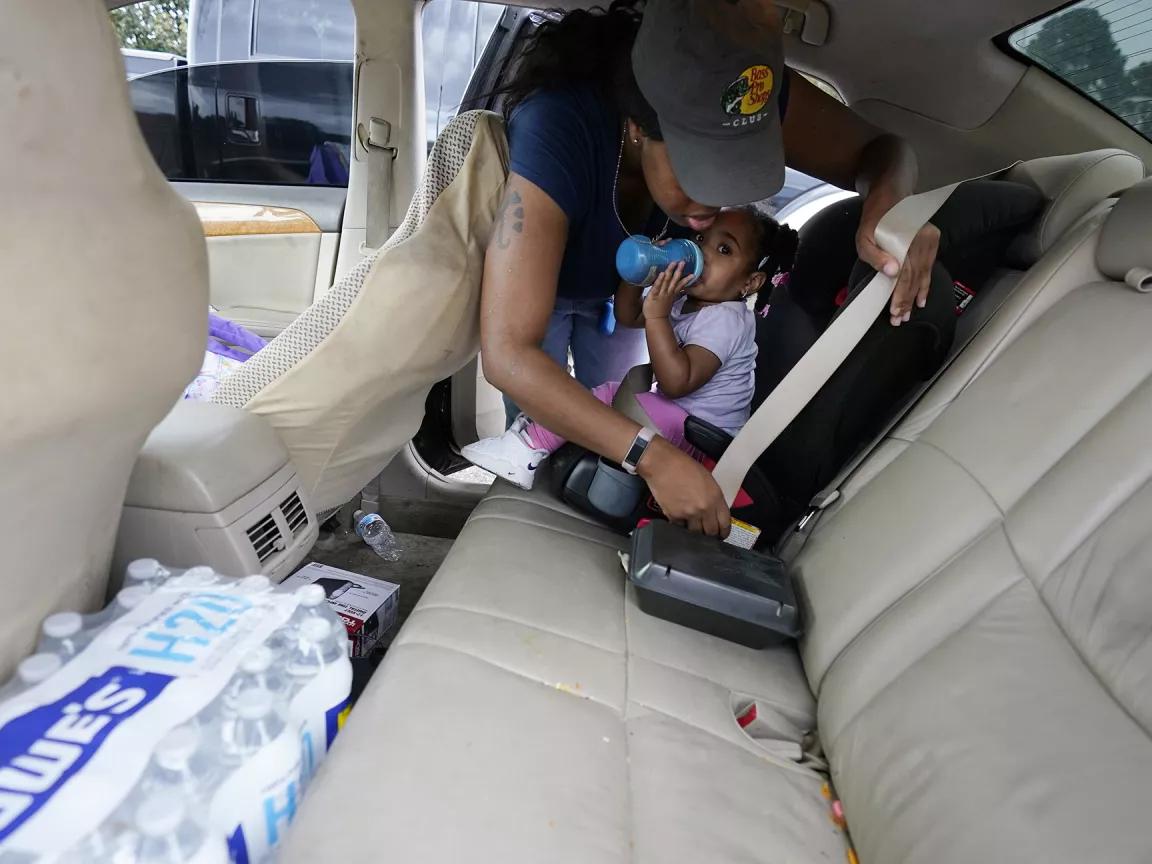
Causes and Effects of Lead in Water
What Can We Do to Fix the Drinking Water Problem in America?
Is Water a Human Right?